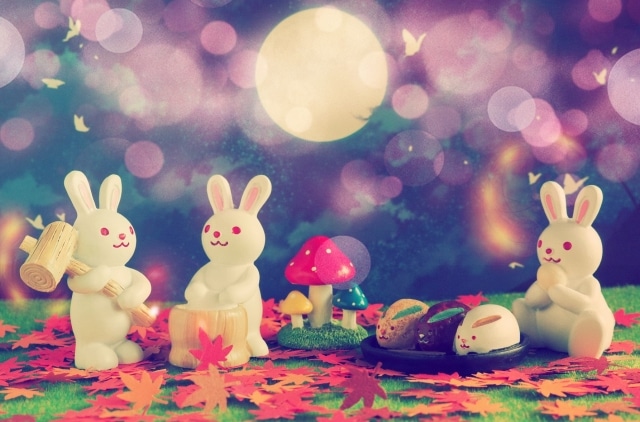Tsukimi: The Japanese Moon Viewing Festival

Tsukimi 月見, the Japanese Moon Viewing Festival, is a cherished tradition that celebrates the beauty of the moon and the changing of seasons. It is celebrated on the 15th day of the eighth month of the lunar calendar. This ancient festival dates back over a thousand years, is a time for people to come together, appreciate the lunar spectacle, and reflect on the passing of time. Tsukimi holds a special place in Japanese culture, embodying a deep connection between nature, spirituality, and community.
The Origins of Tsukimi
The origins of Tsukimi can be traced back to ancient Japan, where it was initially celebrated as a harvest festival. People would gather to offer thanks for a bountiful harvest and pray for a successful planting season in the coming year. Over time, Tsukimi evolved into a more poetic and artistic festival, emphasizing the beauty of the moon and its role in Japanese aesthetics.
Date and Timing
Tsukimi takes place on the 15th day of the eighth month of the traditional Japanese lunar calendar, which usually falls in September or early October in the Gregorian calendar. This timing ensures that the festival occurs during the full moon, allowing participants to fully appreciate the moon’s luminance and splendor.

Traditions and Customs
-
Moon-Viewing Parties
One of the central customs of Tsukimi is the gathering of friends and family for moon-viewing parties. People come together in gardens, parks, or open spaces, often laying out picnic spreads with seasonal foods and sake. This communal aspect of Tsukimi promotes a sense of togetherness and unity.
-
Tsukimi Dango
Special rice dumplings known as “tsukimi dango” are a traditional treat during the festival. They are usually packed in 15 to represent the 15th night of the month. These small, white dumplings symbolize the full moon and are often arranged in patterns resembling rabbit ears. The rabbit is a prominent figure in Japanese moon folklore, and it is believed to inhabit the moon, pounding mochi rice cakes.
-
Pampas Grass and Susuki
People decorate their homes and outdoor spaces with pampas grass and susuki (Japanese pampas grass) during Tsukimi. These plants are believed to ward off evil spirits and bring good luck. Their golden, feathery plumes add a rustic and charming touch to the festival’s atmosphere.
-
Poetry and Haiku
Tsukimi has long been associated with poetry and literature in Japan. Participants often compose haiku or other forms of verse to express their feelings about the moon’s beauty and the changing seasons. This tradition underscores the deep connection between Tsukimi, art, and spirituality.
-
Offering of Fall Harvest
Grapes, sweet chestnuts, sweet potatoes or other harvest of fall are made as offerings. Grapes are the most popular offerings as they are considered to be lucky. Tsukimi has a spiritual significance in the Japanese culture as the full moon is associated with the Shinto deity Tsukuyomi-no-Mikoto, the god of the moon and time.
And here’s a Tsukimi folk song:



